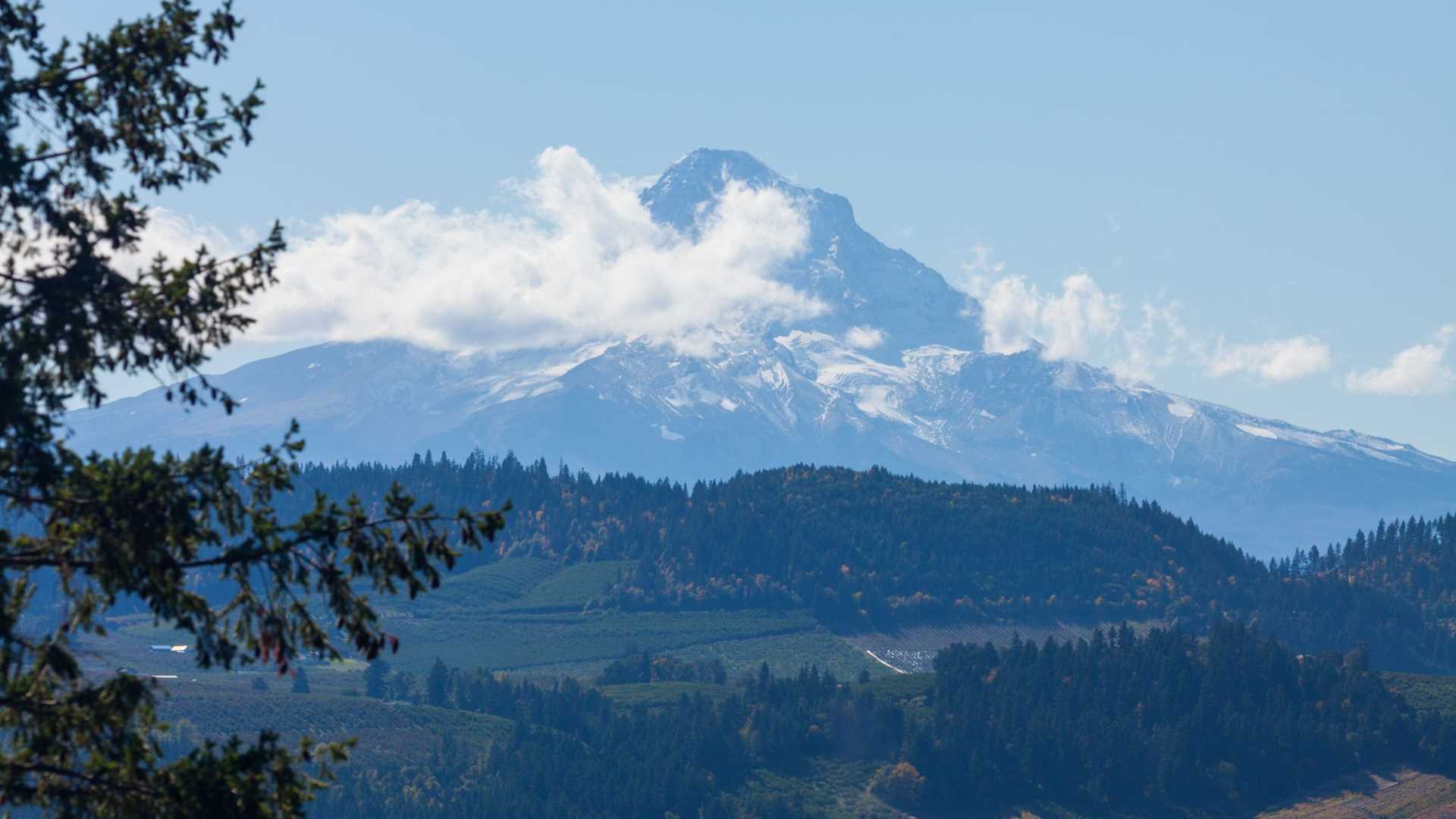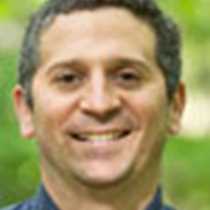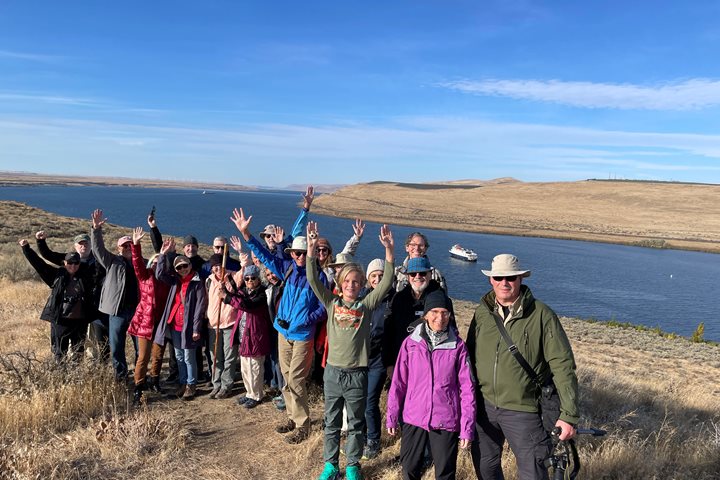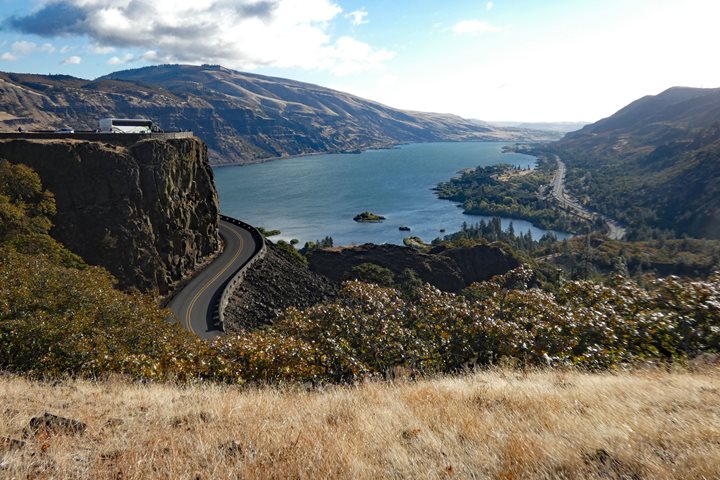Today we woke up to calm conditions on the Columbia River aboard the National Geographic Quest while transiting under a steel trestle bridge that connects Hood River in Oregon with the town of White Salmon in Washington. After enjoying a delicious breakfast prepared by our galley team, we shuttled to shore via Zodiacs to a floating dock in a marina. The sun was poking through the clouds, and mist was rising off the water surface of the river.
We then boarded our motor coaches and made the scenic drive along the Columbia River Gorge scenic highway. There was beautiful morning light on the north side of the gorge as we rolled west. During the ride, our natural history staff members shared interesting tidbits about the human and natural history of the area including a recent large-scale wildfire which the landscape is recovering from.
Our first stop in the morning’s foray was to Multnomah Falls. This waterfall spans tiers of basalt cliff bands and collectively forms the tallest waterfall in Oregon at over 600 feet tall. Some of the more ambitious hikers took the switchbacks to the upper falls where the falling mist from the waterfall provided a refreshing experience. At the base of the falls, some guests experimented with “Live Mode” to create creative renderings of the waterfall on their smart phone cameras that mimic a long exposure technique.
The second half of the morning was spent exploring the Bonneville Fish Hatchery or hiking up Tanner Creek. Along the way, the morning sun, blue skies, and backlight vegetation provided excellent opportunities for photography. The first major landmark along Tanner Creek is Munra Falls, a beautiful cascade observed from a well-built boardwalk. Continuing up the gorge, we eventually reached Wahclella Falls, where we were greeted with a spectacular beam of golden light.
A unique stop was made today at the Crag Rat Hut for an excellent catered lunch and a fantastic view of Mt. Hood. After lunch we stopped at the Draper Girls Farm to learn about the productive agriculture in the region and to sample some fresh fruits. Also at the farm, some guests enjoyed feeding and petting some adorable pygmy goats.
Our final stop on this eventful day was the Western Antique Aeroplane and Automobile Museum (WAAAM). Inside this fascinating museum, guests observed many restored antique airplanes, automobiles, and other historic transportation-related relics. WAAM is considered a “living museum,” meaning that all vehicles are fully functional. And every second Saturday of each month, the volunteers at the museum get the engines running and from what we have heard, attendees can sometimes get to drive or ride in the various vehicles.
Back on the ship in the evening, we had a series of interesting recaps. Topics included banana slug reproduction, orca whale decoys, dam removal, and volcano geology. After dinner we had a remarkable experience on the bow of the National Geographic Quest. Special guest Kathy Sullivan, who is a former NASA astronaut, pointed out the international space station, which we observed crossing the sky from the bow of the ship at around 7:10PM.
Overall, it was a very enjoyable day with a variety of wonderful activities in great weather and excellent company. We are looking forward to tomorrow.







